How Our Museum Grows
A unique and transformative museum mentorship program about biodiversity begins
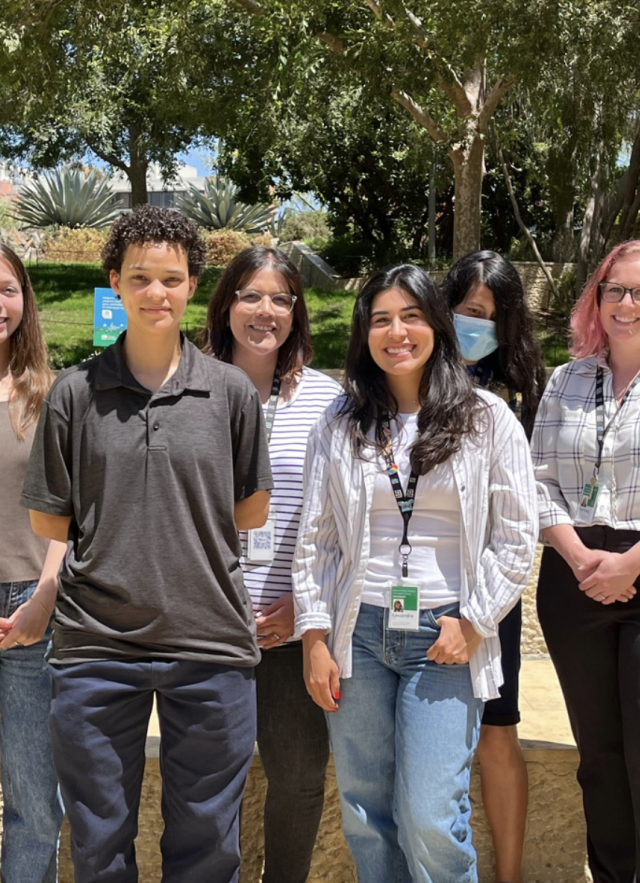
Published September 20, 2023
Lassoing lizards in San Pedro neighborhoods, examining microscopic Ice Age plant remains, scrutinizing squirrel specimens and drawers of dinosaur fossils. It’s only been a little over a month since eight research assistants embarked on their yearlong apprenticeship at the Natural History Museum and La Brea Tar Pits, but the museums are already in their bones.
Meet the mentees of UNLAB, which stands for Understanding Nature and Los Angeles Biodiversity through Museum Collections and Field Research. NHMLAC’s brand new program is an In-person, full time research experience in biodiversity science for postbaccalaureates. Funded by a three-year National Science Foundation grant, UNLAB is designed to develop applied research skills and expose participants to collections-based research. Through these experiences, the program will also contribute to the development of a more representative STEM and museum workforce.
Alongside their mentors—museum science curators schooled in biology and paleontology—this year’s inquisitive crew will train their brains on the interconnection between biodiversity and humans. They may look way back in time and delve into questions of species diversity before humans, and how the natural world is responding to the human-dominated epoch we’re in—the Anthropocene. Dre’Shawn Frencher, Program Manager of the UNLAB Mentoring Program, who has focused his career on working with diverse and historically marginalized communities, says he thinks this program is important because it provides an opportunity for folks who may not otherwise have them.
“There are all kinds of reasons that someone might not have had access to the research experience they need to continue in these fields. For example, I see people who grew up in poverty or in backgrounds who, instead of being able to take labs after school or do unpaid opportunities, had to work while they were attending school,” Frencher said. “I'm grateful that we were able to give folks a space to truly, hopefully level the playing field.”
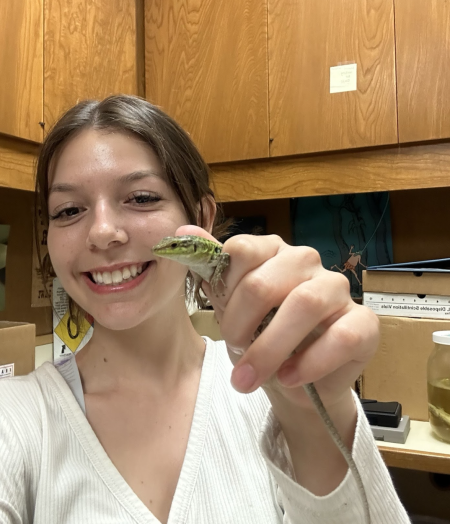
Taylor Vasquez, born and raised in East Los Angeles recently completed her Bachelor’s of Science in Wildlife, Fish, and Conservation Biology from the University of California, Davis, had an eventful intro to the museum world. She joined her mentor, Herpetology Curator Greg Pauly, to San Pedro to collect (with a tiny lasso) Italian Wall Lizards, an invasive species in urban environments that’s been edging out the native Western Fence Lizard, a territorial takeover he’s been tracking. These surveys allow researchers to compare the body shape and size of lizards from the expanding edge of the range to those from the core of the range and to historical specimens in the Museum collection. They are also studying the diet and behavior of lizards across this same edge-to-core transect. In her main herpetology project, Vasquez is looking at how snakes in the wild react to ingesting rodenticide (rat poison).
“There has not been a lot of research done for reptiles and rodenticides; most rodenticide research focuses on mammals. Our study will be the first major study in North America examining whether snakes are getting exposed to rodenticides by ingesting poisoned prey."
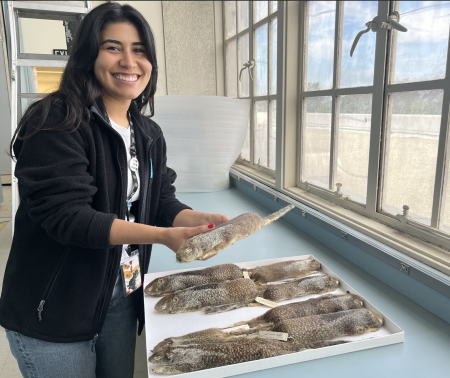
For Cassandra Garcia born and raised in the San Gabriel Valley region of Los Angeles-Hacienda Heights, her first weeks were squirrel-centric. Garcia, who graduated last spring with her Bachelor's of Science degree from UC, Davis, has Kayce Bell, the Assistant Curator of Terrestrial Mammals, as her mentor. Bell studies shifts of small mammal range and host and parasite responses to urban development and climate change.
Garcia will help investigate how small mammal communities in the L.A. region have been impacted over time using museum specimens and community science data. Her project will also look for the landscape characteristics that allow squirrels to thrive in some urban areas. "I first encountered California ground squirrels, unknowingly, the day before my start date here at the museum. They swarm at the very top of Santa Monica’s Palisades Park all along the bluffs, burrowing in and out of their little homes. I’m excited to learn more about these small mammals, and how I can contribute to a greater understanding of their livelihood in southern California."
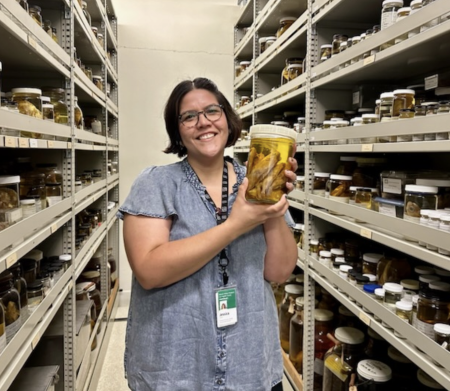
While Garcia is researching scampering mammals on land, her fellow mentee, Jessica Flores, is diving into ocean investigations. Born and raised in Long Beach, Flores received her B.S. in Marine Biology from California State University, Long Beach. She has a broad range of experience, including guest relations, management, and animal care/husbandry and previously worked at the Cabrillo Marine Aquarium, where along with interpreting for the public, she maintained live cultures of plankton, and helped care for a variety of fish and invertebrates. Flores is excited to be working with Bill Ludt, NHM’s Assistant Curator of Ichthyology. They’ll be investigating the effects of human plastic pollution on native marine fish in Southern California over the past 80 years. “We are looking at the presence of microplastics in [filter-feeding and predatory] fish, so I've been getting familiarized with the collection space, how to navigate it, how to find stuff on my own,” says Flores. “We’re trying to eliminate different factors that could be contributing to the presence of microplastics. Is it location? Is it size? There are so many factors that could be playing in, and we need to start figuring that out so policy can be put in place.”
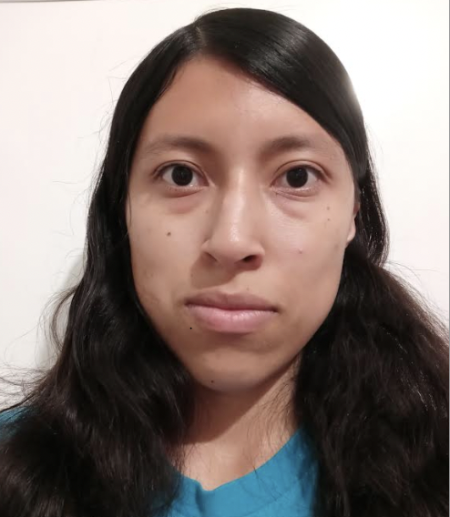
Brenda Barrera has a similar fascination for watery worlds. Barrera will be working with Austin Hendy, the Assistant Curator of Invertebrate Paleontology to investigate habitat degradation, resilience, and recovery in shallow marine invertebrate communities off the coast of Los Angeles. They hope this research will provide a more accurate picture of marine communities before human influence. “I studied marine science at California State University, Monterey Bay and I’m interested in marine community ecology, such as the effects of climate change on the structure and function of rocky shore communities,” said Barrera, who grew up in South L.A. She became interested in these topics because of a research project she was involved with in which she analyzed how organisms respond to anthropogenic impacts, and how organisms interact with each other and compete for similar resources within intertidal communities. “I am grateful to be a part of this amazing opportunity,” said Brenda, “and I am looking forward to the research that I will be involved in at NHM.”
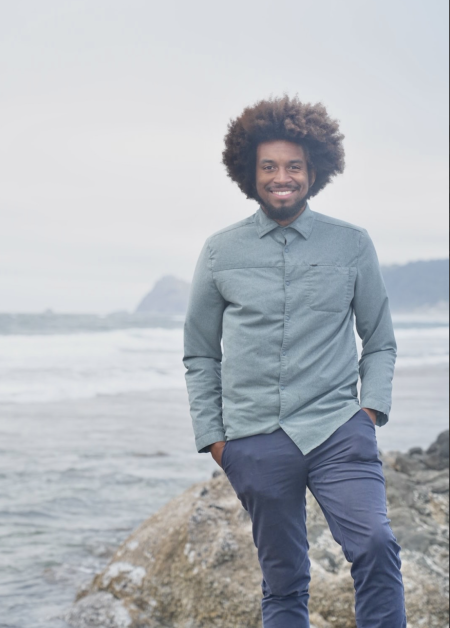
Moses Aubrey is also enthusiastic about the year ahead. Born and raised in Los Angeles Aubrey completed his Bachelor of Music at UCLA and is also a music educator and a touring musician. Through his photography, Aubrey enjoys highlighting the incredible biodiversity that exists in L.A., in neighborhoods, yards, and our local parks. He’s taken shots of Great Blue Herons, Grunions, Jumping Spiders, grows native plants, and is learning about the critical role native plants play in promoting biodiversity. Alongside his mentor, Allison Shultz, Associate Curator of Ornithology, Aubrey is studying the morphological, ecological, and/or genomic shifts in a variety of introduced bird species in Los Angeles County. He’ll also examine feather color and microstructure in urban-living and native birds, as well as study the impacts of exposure to human-made environmental contaminants such as air pollution, oil spills, and environmental heavy metals.
“I’ve been learning about urban birds and feather dirtiness, and looking at black carbon found within those feathers and seeing how that correlates with environmental policy change if it has at all,” says Aubrey. “In certain places in the world, there is just a very strong relationship people have to nature, and in post-colonial times in the United States, we've had this kind of relationship where we dominate nature, and things are so separated from our day-to-day lives. We are unaware of where things come from a lot of the time, where those resources are extracted from, and I think learning about the birds that inhabit the world around us will help us have a more holistic view.”
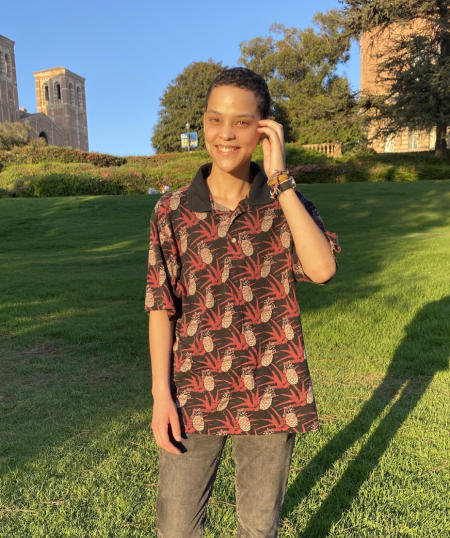
Max Cusack-Mercedez is also training their eyes on birds, but specifically those in the fossil record. A recent Los Angeles transplant, who graduated from Eastern Connecticut State University with a BS in Accounting, they are excited to branch out into paleontology after leaving the corporate world. Cusack-Mercedez will work with Nate Smith, Curator of the Museum’s Dinosaur Institute to analyze the avian fossil record. They’ll examine how fossilized skeletal elements record past bird diversity, and document and quantify the degree of preservation bias (over vs. under represented skeletal elements) in order to understand how reliable the fossil record is for understanding the evolutionary history of birds.
“I'm starting to see and handle some skeletons now, and compare different species, which is cool,” says Cusack-Mercedez. “Then get out the databases and compare to what's been found across different museum records.”
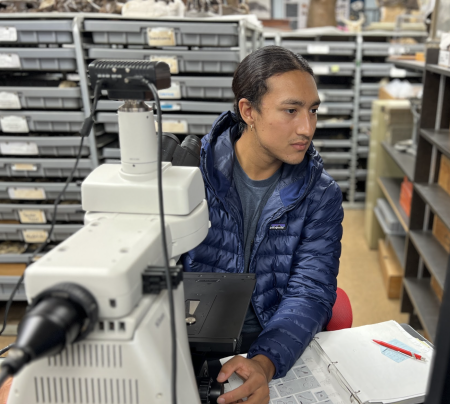
Tekpatl Kuauhtzinm, a Nawa Indigenous person descended from the Original Pueblo of San Pedro Kwawximalpan, will be delving into a different set of records, across town at La Brea Tar Pits. Kuauhtzinm, who has Bachelors of Arts in American Indian Studies and a minor in Geography/Environmental Studies from UCLA, worked at an Indigenous Peoples school, Anawakalmekak, as the reforestation coordinator and managed the K-12th grade student and community restoration of 500 native trees and 300 native plants in Ernest E. Debs Park in collaboration with the Native people of Los Angeles, the Gabrielino-Shoshone Nation of Southern California.
Tekpatl will be working with Regan Dunn, the Assistant Interim Deputy Director and Assistant Curator of La Brea Tar Pits, to study California grasslands through time. They will collect, prepare, and analyze soil and sediment samples associated with plant remains from La Brea Tar Pits and other sites in Southern California that correspond to periods before human arrival in California to the present.
“We're studying grasses that were excavated from the tar pits and from nearby under one of the buildings and trying to figure out what grasslands were like here thousands of years ago,” Kuauhtzinm said. They’ll also look at the teeth of fossils of grass-eating mammals to see what greenery the Ice Age herbivores were chomping on. “Then we’re taking it a step further, and I’m going to be working with my community in figuring out what grasses were there then, and how to restore that area. So, it's a really cool project for me.”
Courtney Rohrer, a Montana native who moved to L.A. five years ago after separating from the Air Force, is energized by the upcoming year’s possibilities. While in the Air Force, she was a network administrator, but always wanted to get into the sciences. It was quite the change but she found she loved learning about ecology and biodiversity. While working on her degree in biology, she volunteered in the NHMLAC Vertebrate Paleontology Department, prepping fossils and helping with collections management.
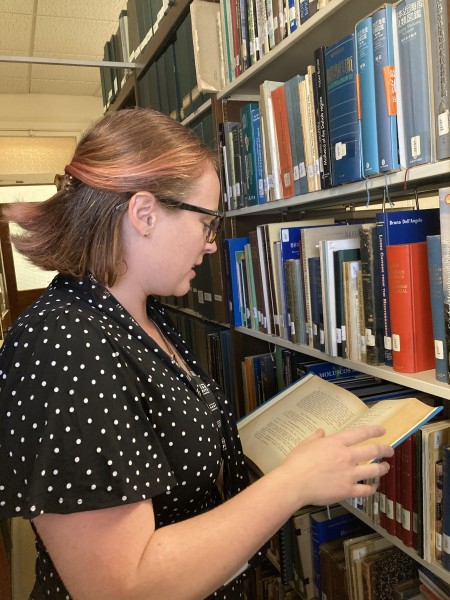
“I was volunteering here already, so I was already kind of familiar with the institution and a lot of the things they did. And the program just sounded like it'd be great for making that next step into an actual career, or into further academics and figuring out what I want to do with my life.” Rohrer will be working with her mentor, Jann Vendetti, Associate Curator, Malacology to document human introductions of terrestrial gastropod species in Southern California, such as glass snails, Oxychilus spp., and the white Italian snail, Theba pisana. “I am finding a neat little world that is actually fascinating. It's cool getting to work with scientists,” said Rohrer. “I think it'll be awesome to be a published author for research. That's something I didn't expect; it’s kind of wild.”
Vendetti, who is one of the Principle Investigators of the grant, said that one of its goals is to provide inspiration, role models, and culture that inspires excitement for a career that the mentees may never have imagined. “Talent and enthusiasm are equally distributed among those interested in science, but opportunity is not,” said Vendetti. “What we hope to do is break the scientific process down into manageable, understandable chunks and create an environment that is encouraging and supportive for people to go on in the sciences.”
Frencher agrees. “It's almost like you need someone to show you that it's possible. I honestly see this program even as a long-term investment. Hopefully, we are setting folks up to be the ones that can show younger generations that ‘Hey, you too can do these things….it's possible, and we're willing to create space for you to achieve them.’ ”